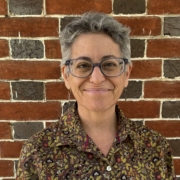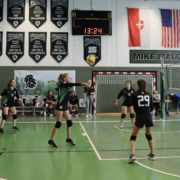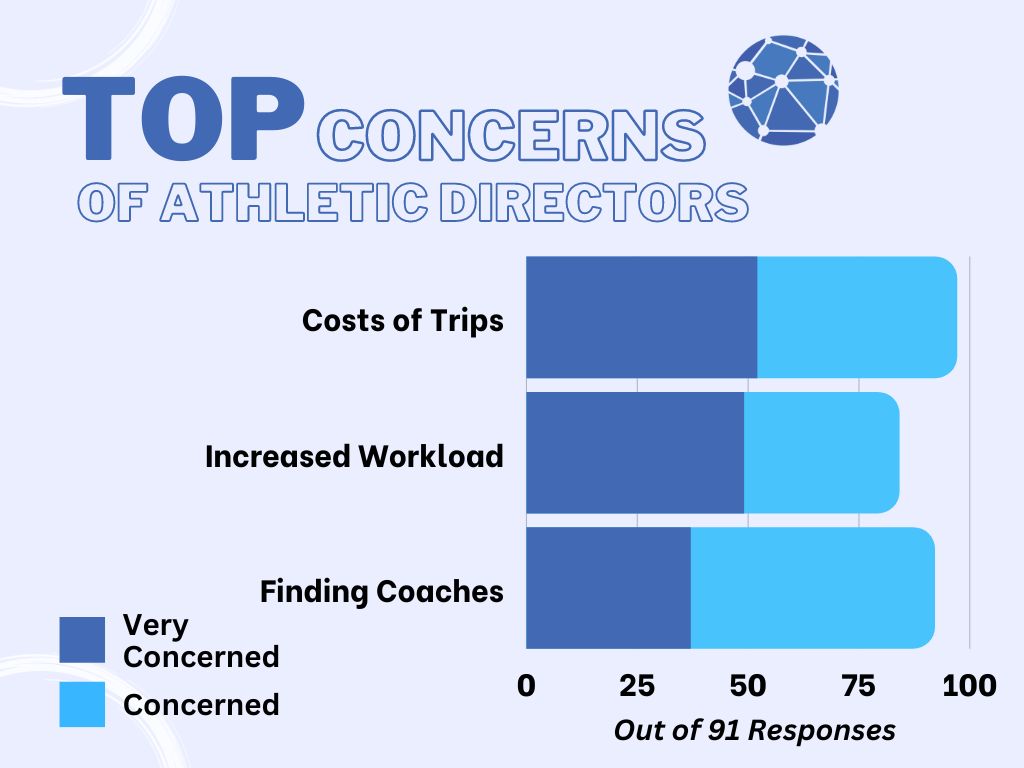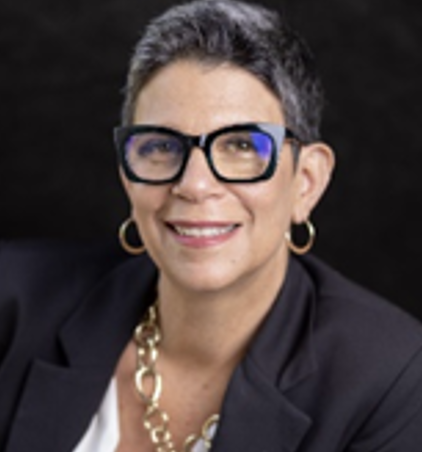Reflections on an Unusual Admissions Season: Are We Seeing More Girls on the Autism Spectrum? What are You Seeing?
Judith Wides, M.A., M.Ed., LMFT
Director of Counseling and Family Support
National Child Research Center Preschool
Washington, DC
As we dive into the 2023–24 school year, many of our fellow school-based practitioners are finally feeling rested, recharged, and ready for a good year. Last year, after the preliminary post-Covid return to school offered some semblance of normalcy, we were still tired. This year feels different. Families seem less stressed, teachers appear more openhearted, and the children are playing in a more carefree fashion—and all without masks! Moving forward, we know that Covid variants will ebb and flow, but for the most part, our faculty, students, and their families are safely vaccinated and generating immunity.
This article is intended as an open question to the broader community of professionals who work with young children around the world. It is an invitation to start a conversation about trends we are seeing in the young children we serve here in Washington DC. During our last two admissions cycles we saw an increase of little girls who presented with features of autism. As I share the details of our admissions process and schoolwide practices, I hope you will reflect on your own experiences, and consider sharing them with me.
In 2028, the National Child Research Center Preschool (NCRC) will celebrate 100 years of establishing the first inclusion-model, early-childhood program in the United States. We serve children from ages 2-5, and from year to year, on average 12-18 percent of our students benefit from additional special educational support and adaptations. We are the only early childhood program in Washington, DC with a full time Child Development Team. Our team includes myself as the school counselor, an Occupational Therapist, Speech and Language Pathologist, and our Director of Diversity, Equity, and Community. We also have a part-time Behavior Support Specialist with extensive training in Applied Behavior Analysis (ABA) who works closely with our teachers to create targeted interventions and ongoing support plans. We all collaborate during admissions events to try to find children who will thrive at NCRC.
In our admissions process we intentionally seek out children with special educational needs, and their families, as an essential part of building our diverse and inclusive community. The children may be wheelchair users, use assistive technology to communicate, or have Down’s Syndrome, but nearly 100 years of practice informs our drive to create inclusive classrooms that are play-based with an emphasis on social emotional learning. We hold dearly to the sentiment that preschool is about learning to be part of a group, and that by creating a diverse and inclusive learning environment for young children, we are contributing to building a more diverse and inclusive society.
The majority of the children that we meet during our admissions season are applying for places in our early learning tier, those children who will be age 2 by the following September 1st. That means that we are meeting these young toddlers and their families 6-8 months before they will join our school community. Last year when we began the admissions process for this current school year, we decided to limit ourselves to only taking in three new classes of the youngest age peer group of children ages 2 to 2.5 because we were seeing such high levels of need in the applicants as well as across all the age peer groups that we serve at our school. Like many schools that offer inclusion programs, there are always more children in need than we can serve.
From the group of 105 children who applied for admission last year into our early learning classes, we offered 47 places with a combination of full day and half day programming. Of the 47 we accepted, 5 were invited specifically to participate in our internal multidisciplinary early intervention/developmental support program. This program, called Early Beginnings, has an extra small group pull out experience as well as a weekly parent support/education group, and a monthly therapeutic home visit. Another 10-12 children of the 47 that we accepted would need some support in specific areas of development, perhaps just some speech therapy, or just some support with fine and gross motor development etc. In general, we finished off the admissions season with a concern that a very high number of the children we accepted were going to need coaching in social play skills.
As a school that embraces a play based, emergent curriculum approach, our teachers love to play and discover with their students. Faculty input factors heavily during our admissions process. Our teachers and specialists are experts in understanding the impact of challenges and delays on skills and behaviors in a classroom setting—and they love to problem solve. We are very fortunate that the majority of our teaching faculty have masters degrees in Early Childhood Education or Early Childhood Special Education. We have a master teacher who serves as our Pedogogista and deepens our work in supporting play and emergent curriculum.
Every year we begin the admissions process by looking for students who have one thing in common, regardless of their abilities: they are interested in play. NCRC’s emergent curriculum follows a Reggio-informed practice with a strong emphasis on play-based, social-emotional learning. In addition, our classroom practices are heavily informed by the relationship-based intervention model developed by Hand in Hand Parenting and we have adapted many elements from the Social Thinking Curriculum into our program with great success.
Like our curriculum, our admissions events are play-based. As part of the application process, a child and a parent visit NCRC for a brief playgroup experience, designed intentionally to be low stress, with small groups of four to five families. These opportunities allow young children to engage in playful activities with experienced educators who get to know the applicants by exploring open-ended play materials, reading a story as a group, singing a song, and eating a snack together. We do our best to keep the session as light-hearted and fun as possible.
When parents ask us what we are looking for during our admissions play sessions, we emphasize that we’re not interested in whether a child can count to 10, identify letters, or name complicated shapes. Our play-based program is best suited for children who understand social reciprocity: those who express shared enjoyment through interactive communication with other children and teachers within a classroom setting. Social reciprocity can be observed in both verbal and non-verbal behavior in young children. Examples of social reciprocity include, responding to one’s name, pretending to make coffee for a parent and handing it to them while smiling and “stirring in the sugar”, or turning a pine cone into a cell phone to call daddy, who is across the room, calling back with another pine cone. We are interested to see if the children find their parents, the other children around them, and the teachers interesting, socially.
In addition to looking for evidence of social reciprocity, we are curious to see if a child can discern what the group plan is. We borrowed this language from the Social Thinking Curriculum, and now use it to organize the day in each of our classrooms. In an established classroom community the group plan may look like the universal daily picture schedule used in all early learning classrooms. However, when children attend play sessions we are eager to see if they understand the more subtle idea of shared experience. So instead of just exclusively following their own ideas and interests with the materials offered, can our tiny visitors see that (even if they choose not to participate) the other children, parents, and teachers in the classroom are listening to a story, or singing a song together, or that everyone is having a snack together?
We don’t force children to participate in any way during the admissions play sessions, but we do look to see if they can accommodate their behavior to the social context, or the group plan. If they opt to play with a car instead of listening to a story, can they play quietly, intuiting that there is a larger plan unfolding? Or does the child march around the room loudly with the car, making machine noises as if she or he were the only person in the room, immune to the parents’ attempt to engage the child in the group activity? Our concern for the appropriate placement of the child arises when we observe children who demonstrate more interest in the inanimate objects around them, rather than in the other children and adults in the play session.
In the past two admissions cycles we began to see more and more children in the latter category. In particular, girls who were not social, and they were more interested in blocks, trains and cars than in the people around them. Many of the parents of these children referred to their toddlers as Covid babies. They were using the meme ‘Covid baby’ as a catch all phrase to explain all things developmental, and in particular observed delays in social communication.
The social isolation during the pandemic certainly had an impact on all children. However, an increasing number of the girls we were meeting were not responding to their names, not making even fleeting eye contact, and they played in very repetitive fashion with blocks and vehicles, showing no interest in the other children or teachers in the room. As quickly as a parent could explain away their daughter’s lack of interest in other children as a result of the pandemic, I could easily think of ten other children that we had met who were born in 2019 or 2020 who were eager to make eye contact, or participate in a sing along, and play in parallel with other children, but with a clear social awareness of others in the room.
In fact we met plenty of “‘Covid babies”’ who were very social and eager to play and engage, even if they had no siblings, and had spent the first two years of their life in relative social isolation, just with their parents as play partners. These typically developing children, born just before or during the pandemic, may have been a bit more shy, or slightly more delayed in their language development, but they were meeting developmental milestones on a generally typical trajectory.
At NCRC we have for many years successfully supported children who present with mild to moderate characteristics that are associated with the autism spectrum. Right from the outset during our admissions events we are pretty good at identifying children who, despite their social challenges, will be happy in our programs. If we do a good job of matching students to our programs, many of these children will move on to attend kindergarten with their typically developing age peers. We are also quick to identify those children who would benefit from a more therapeutically intensive school setting, and often we are the first professionals to guide their parents toward early intervention services. These conversations are never easy.
Historically, as early childhood educators we have seen more boys who struggle with social engagement than girls. According to the public website hosted by the U.S. National Institute for Mental Health (NIMH) and the Center For Disease Control and Prevention (CDC),and the Autism and Developmental Disabilities Monitoring (ADDM) Network, statistically there are currently more males than females on the autism spectrum globally. So it was surprising for us to see such a dramatic increase in girls who lacked interest in their peers, and could not be engaged by teachers or skilled therapists, during our admissions play sessions. Our Speech and Language Pathologist and our Occupational Therapist — with more than 30 years of collective experience working with children with autism and other development delays, could not engage these girls in play.
Returning again to the information provided on the public website from NIMH, the CDC, and the Autism and Developmental Disabilities Monitoring (ADDM) Network, there has been a steady rise in children being diagnosed with autism in the last twenty years. Based on data released in March of 2023, for data collected through 2020, the US was averaging 1 in every 36 children by age 8, being diagnosed with ASD. In 2012, the number was 1/69. At the time of the release of the data for 2020, ASD was noted to be nearly 4 times (3.8) more prevalent in boys.
We began to wonder if this phenomenon of meeting more little girl applicants, with a very restricted range of social communication skills than ever before, was limited to our community in Washington DC, or if our colleagues around the country were seeing similar presentations. So, we reached out to our professional networks in the field of speech and language therapy, occupational therapy, and counseling to try to gather more information. After reaching out to our colleagues, the response was clear: they were also seeing a significant increase in the number of girls who meet the criteria for an autism diagnosis.
I am not a scientist, and although I took enough statistics courses during my postgraduate training to know that our casual polling data means nothing statistically, I am curious to know what others are finding in their classrooms and communities. Last spring I reached out to colleagues at ECIS, and they graciously offered me this opportunity to tell you our story, and to ask you to share yours. In Washington we feel particularly committed to creating opportunities for increased dialogue on this topic and would love to talk to other early childhood educators as we begin to think about what early intervention will look like in order to provide maximum support for these girls and their families. Please let me know if you are noticing more girls who are struggling with social communication and play. As we work toward a future of providing all children with what they need in order to thrive and grow at school, we need to get this conversation started sooner rather than later.
Please feel free to reach out to me at jwides@ncrcpreschool.org if you would like to share your observations with me. Thank you for your time.
ABOUT THE AUTHOR
Judith Wides is the Director of Counseling and Family Support at the National Child Research Center Preschool in Washington DC. She has been supporting children and families for over thirty years with a special focus on early childhood mental health. Judith loves working collaboratively with parents and teachers to provide children with opportunities to become their most authentic and joyful selves.














